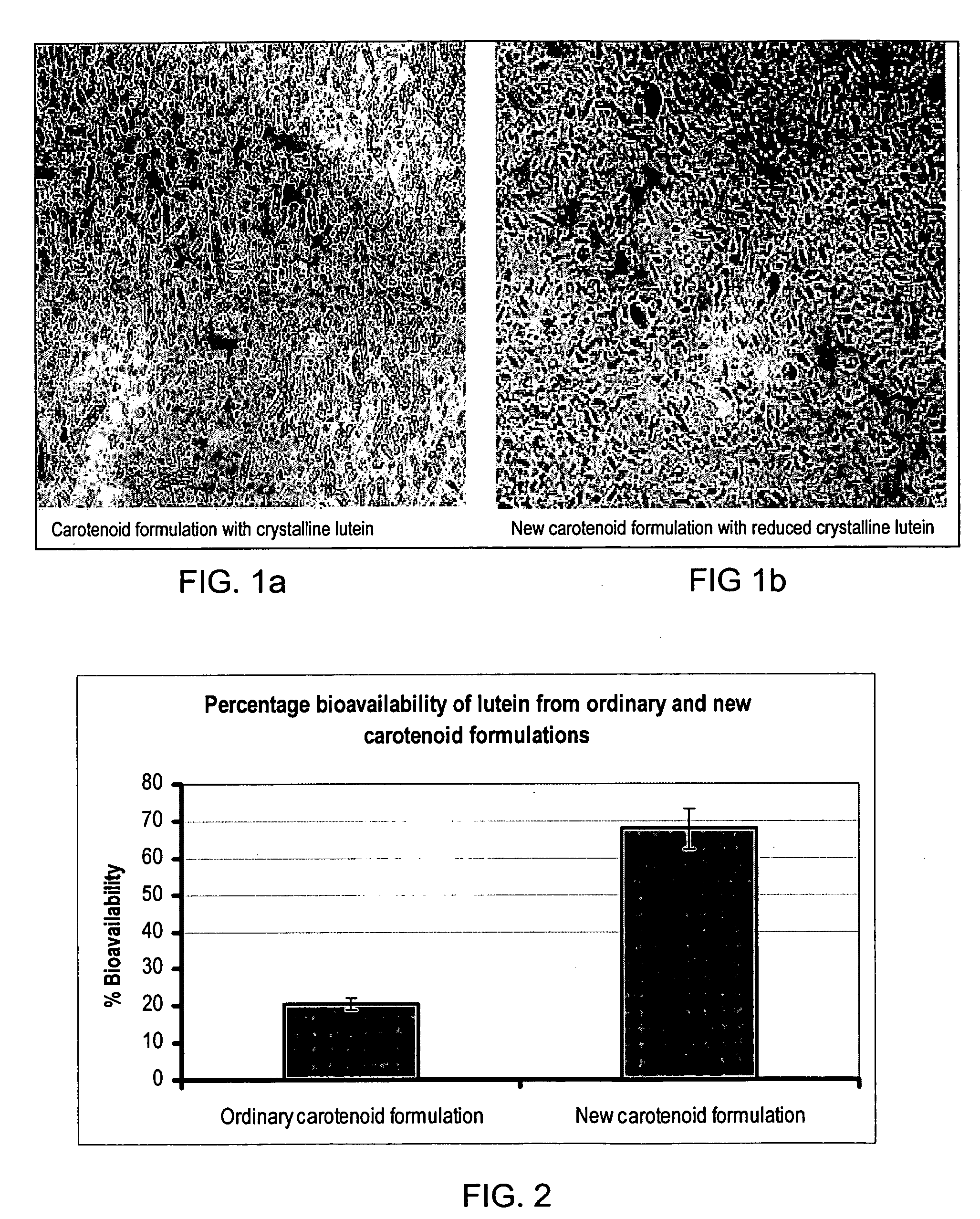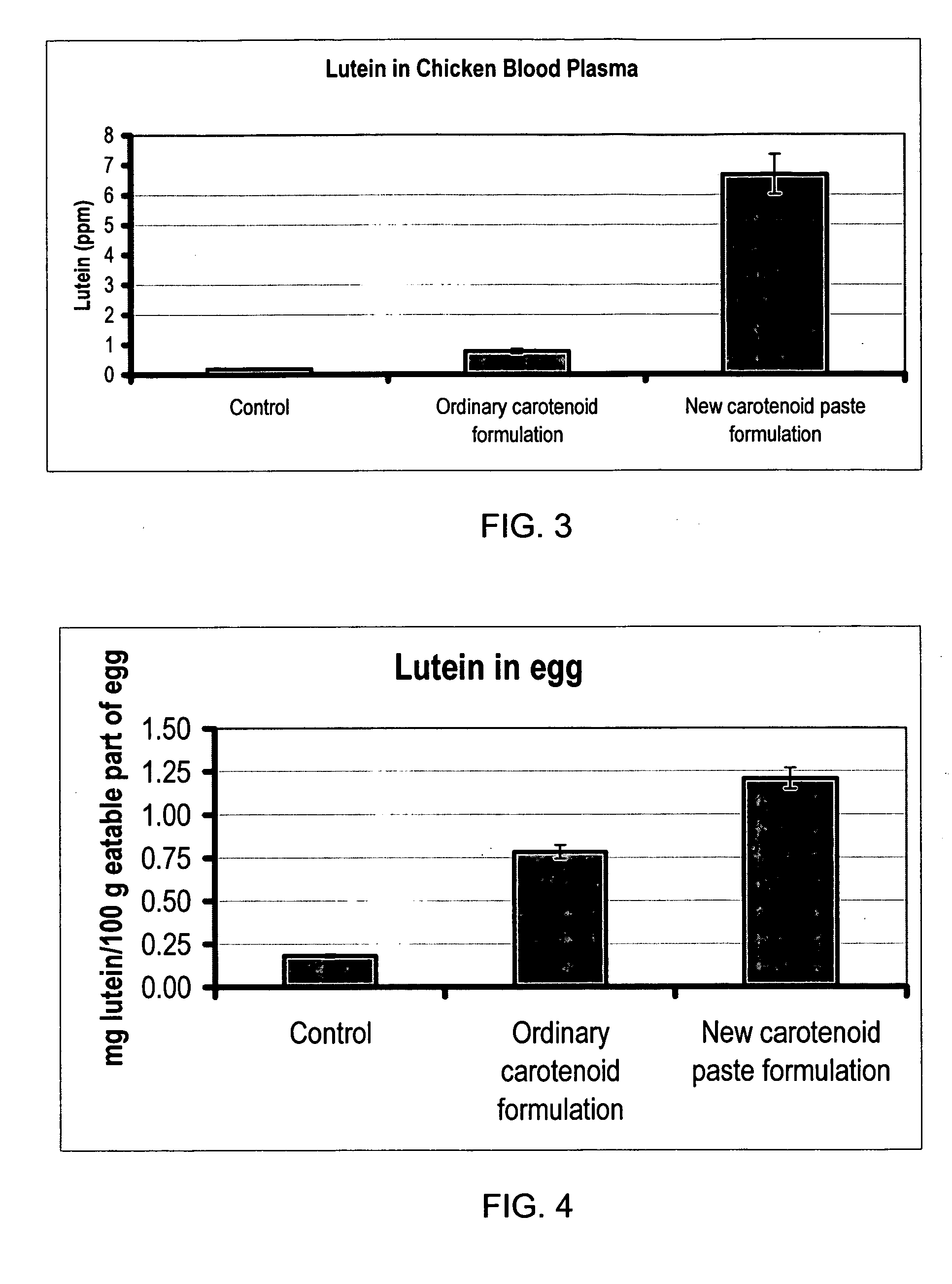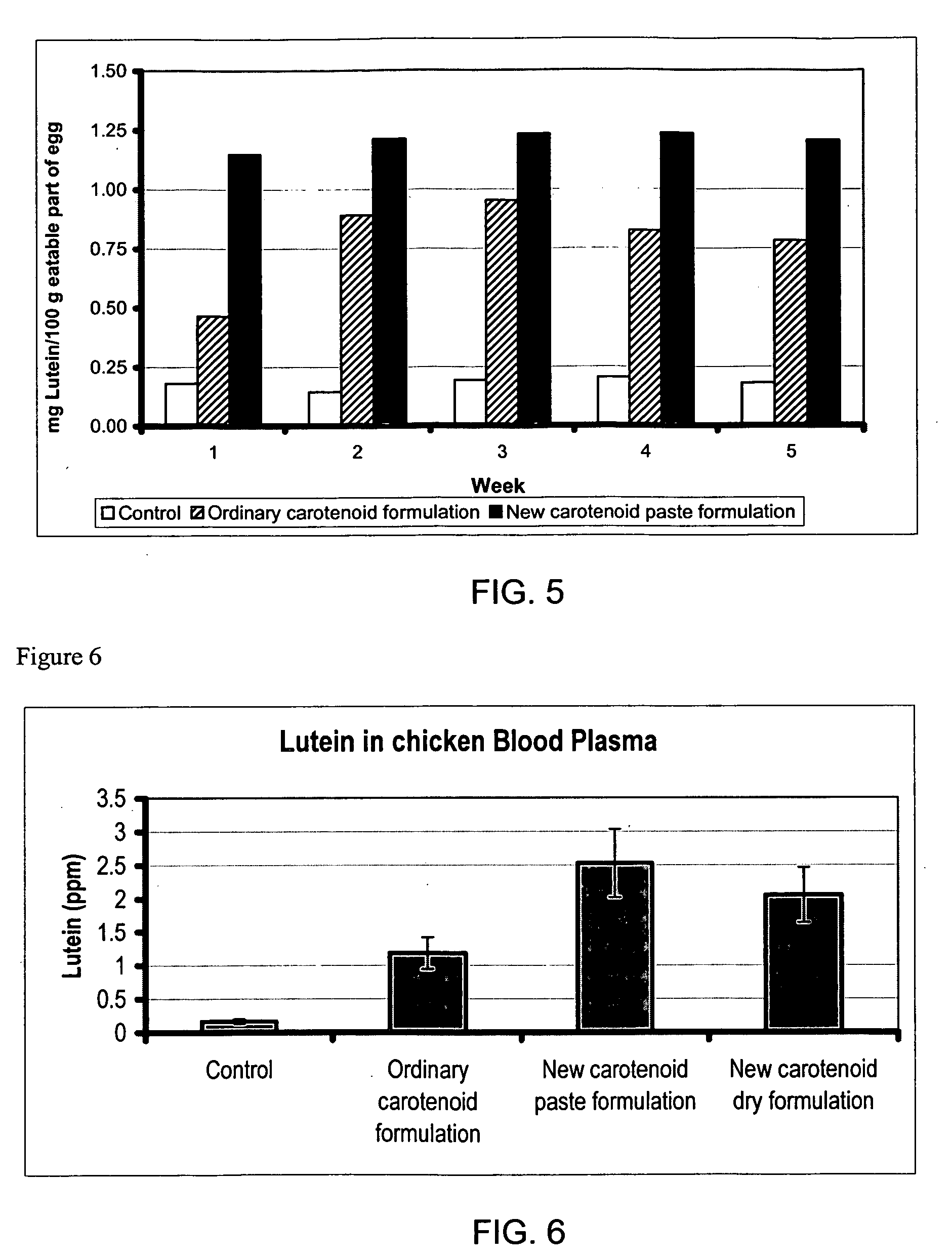Formulation for increasing the deposition of dietary carotenoids in eggs
- Summary
- Abstract
- Description
- Claims
- Application Information
AI Technical Summary
Benefits of technology
Problems solved by technology
Method used
Image
Examples
example 1
Materials and Methods
[0024] All solvents and reagents used in the current study were of Analar Reagent grade. An in vitro method was employed to measure the micellarized lutein in the aqueous layer. This in vitro protocol was simulating the four stages of the chicken's digestive system namely crop, proventriculus, gizzard and small intestine. The pigment formulation sample was taken, mixed with saline and the pH of the mixture was adjusted to 5.5. This mixture was incubated for 30 minutes at 41° C. Pepsin solution was added to the incubated mixture and the pH was adjusted to 4 before subjecting this mixture to one hour incubation at 41° C. The pH of the incubated mixture was adjusted to 5.3 and pancreatic juice was added. The pH of this mixture was then raised to 7 and subjected to one-hour incubation at 41° C. This digested mixture was centrifuged and the aqueous layer containing the micelles was carefully separated for lutein quantification. The ordinary and the new paste carote...
example 2
Materials and Methods
[0026] All solvents and reagents used in the current study were of Analar Reagent grade. Analytical lutein was procured from Kemin Food (Des Moines, Iowa).
Experimental Details
[0027] A trial was conducted using a control and two different treatments. Table 2 gives the composition of the control diet used in this trial. The treatments were designed to study the effect of the new emulsified paste formulation over and non-emulsified ordinary formulation on the lutein deposition in egg and in chicken blood. The first treatment was a control where none of the above ingredients were added. Treatments 2 and 3 were the experimental formulations. These experimental carotenoid formulations were added at a rate of 2 kg per metric ton of chicken feed. The lutein content in the mixed feed was approximately 30 g per metric ton of feed. Twenty-two week old Lohamann Brown hens were used. The birds were fed with the experimental diets and allowed two weeks for adaptation to ...
example 3
Materials and Methods
[0036] A trial was conducted to study the effect of the new carotenoid formulation in the dry form. The new carotenoid paste formulation and the ordinary carotenoids formulation were also subjected to this trial. The trial included a control and three different treatments. All solvents were from Merck (Germany). Analytical lutein was procured from Kemin Foods, L.C. (Des Moines, Iowa).
Experimental Details
[0037] A trial was conducted using a control and three different treatments. The same control diet composition used in Example 1 (Table 2) was used in this trial. The ordinary carotenoid formulation and the new carotenoid paste formulation were included at rate of 2 kilogram per metric ton of feed. The inclusion rate of the new carotenoid dry formulation was 3 kilogram per metric ton of feed. For all the three experimental treatments the concentration of lutein in the feed was approximately 30 gram per metric ton. Twenty two weeks old Lohamann Brown hens wer...
PUM
| Property | Measurement | Unit |
|---|---|---|
| Fraction | aaaaa | aaaaa |
| Fraction | aaaaa | aaaaa |
| Mass | aaaaa | aaaaa |
Abstract
Description
Claims
Application Information
 Login to View More
Login to View More - R&D
- Intellectual Property
- Life Sciences
- Materials
- Tech Scout
- Unparalleled Data Quality
- Higher Quality Content
- 60% Fewer Hallucinations
Browse by: Latest US Patents, China's latest patents, Technical Efficacy Thesaurus, Application Domain, Technology Topic, Popular Technical Reports.
© 2025 PatSnap. All rights reserved.Legal|Privacy policy|Modern Slavery Act Transparency Statement|Sitemap|About US| Contact US: help@patsnap.com



